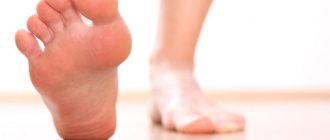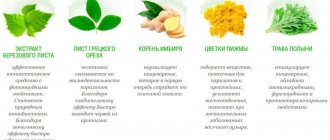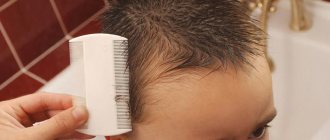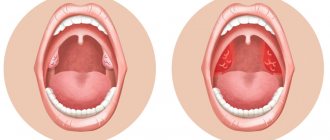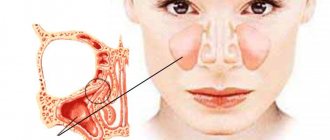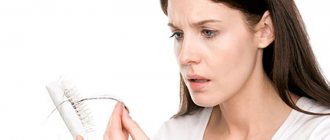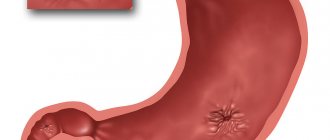Author
Andreeva Elena Gennadievna
Leading doctor
Therapist
Publication date: 11/18/2019
Movement helps fight hypertension
The risk of hypertension increases with age. But we can influence our health. With some effort, you can prevent high blood pressure or bring it under control. According to recent research, exercise can play an important role in the fight against hypertension.
A little extra physical activity every day can go a long way, and there's no need to hit the gym or start running marathons.
What workouts will help reduce blood pressure?
To begin with, it must be said that not all physical activity will help normalize blood pressure. Some really useful types of training and exercises for hypertension include:
- walking,
- Nordic walking,
- easy jogging,
- swimming and water aerobics,
- some yoga asanas,
- low intensity aerobics,
- bicycle rides,
- skiing,
- breathing exercises,
- therapeutic exercises.
With their help, you can not only normalize your blood pressure (BP), but also avoid similar problems in the future. However, this is relevant only with a slight increase in blood pressure and stage 1 hypertension. You can read more about the classification of hypertension in this article.
For experienced hypertensive patients, there are special breathing techniques and physical therapy (PT). We will talk about them further.
How to do breathing exercises for arterial hypertension
Proper breathing allows you to avoid oxygen starvation of the brain, which provokes pressure surges. For prevention and treatment, you can perform simple exercises:
- Take a sitting position, keep your posture straight, relax. Take 4-5 sharp breaths through your nose, keep your mouth tightly closed. Do not pause between breaths. Exhale, take a break for 5-10 seconds and repeat inhalations 20 times;
- Take a comfortable position, sitting or standing, clasp your shoulders with your arms. Do repetitions to the left, inhale sharply through your nose, turn to the starting position, exhale through your mouth. Do the same to the right. It will take 8-10 turns;
Stand up and squat with a straight back. Tilt your head to the side, pressing your ear to your shoulder. Inhale sharply through your nose and slowly exhale through your mouth. Then do the same exercise in the other direction. Repeat 8-10 times.
What are the benefits of exercise for hypertension?
Correct and regular exercise therapy for hypertension contributes to:
- increasing the tone and endurance of the cardiovascular system;
- normalization of blood circulation and prevention of atherosclerosis;
- reduction or removal of painful symptoms (heaviness and pain in the head, tinnitus, chest tightness, etc.);
- oxygen saturation of organs, which is very important for the prevention of stroke and heart attack;
- prevention of respiratory system diseases;
- relieving psychological stress, improving mood;
- normalization of sleep;
- improving performance.
Who is contraindicated for therapeutic exercises for hypertension?
It is strictly forbidden to perform even the simplest exercises for hypertension in the following cases:
- during attacks of angina pectoris;
- with severe arrhythmia;
- immediately after the onset of a hypertensive crisis;
- with pressure readings of 200/110 and above.
It is recommended to stop training immediately if the following symptoms appear:
- accelerated heartbeat;
- dizziness;
- attacks of nausea;
- discomfort in the chest area;
- tinnitus;
- the appearance of black dots, circles and other visual abnormalities before the eyes;
- numbness of the limbs, neck, face;
- severe shortness of breath.
In any case, you can start such activities only after preliminary consultation with your doctor.
Benefits of swimming for hypertension
According to cardiological studies, swimming is the most effective method in the fight against hypertension. Thus, systematic exercise leads to a decrease in blood pressure and increases the patient’s tolerance to stress. In the initial stages of pathology, swimming can minimize the first manifestations of the disease.
During swimming, the musculoskeletal system experiences less stress than when running.
The therapeutic effect of swimming on the body of a hypertensive patient:
- horizontal position ensures better blood flow in the vessels;
- rhythmicity of movements allows you to stabilize the contractile activity of the myocardium;
- the elasticity of the vascular wall increases;
- metabolic and hemodynamic processes are accelerated;
- blood circulation in peripheral vessels improves;
- Body weight is normalized, thereby reducing cholesterol concentration.
Physical exercises for hypertension in the pool consist of a special swimming technique, when the patient lies on his back, performing parallel strokes with his arms. The method is based on rhythmic alternating swings of the lower and upper limbs, observing deep inhalation and exhalation. In the position on your back, you should alternately perform swings in the water, raising your arms to the level of the armpit, then you need to extend them and push off sharply. With this technique, the lower limbs must alternate short movements to ensure a horizontal position of the body in the water.
Swimming serves as an alternative to antihypertensive therapy in cases where the patient is found to be resistant to the effects of antihypertensive drugs. Positive dynamics are observed with systematic structured exercises in combination with water aerobics and gymnastics for stretching in water.
No ads 3
What exercises should you not do if you have hypertension?
There are a number of exercises that a person diagnosed with chronic hypertension should forget about until better times. Here is their list:
- any strength exercises with weights;
- static (in which you need to remain in a motionless position for a long time, tensing your muscles);
- performed at an accelerated pace;
- in which it is necessary to do deep bends, as well as excessively load the cervical spine;
- in which it is necessary to throw back the head strongly or raise the legs above its level;
- in which it is necessary to make sudden movements (jumping, quick squats, throwing a projectile, etc.);
- sprint running;
- climbing stairs;
- climbing a rope.
Ideal scheme
Warm-up is the first stage of any workout. For those suffering from hypertension, it is especially important, since during warm-up the blood vessels dilate, which means it will be easier for the heart to pump blood through them. In addition, gradually entering the rhythm will allow the heart muscle to smoothly get involved in the movement and not be overloaded from the very first steps.
Recommended time: 5–8 minutes.
What to do: walk at a moderate pace (you can stand still), move your arms and legs in different directions, bend and unbend them, squat shallowly, raise your legs, turn your body, rotate your head and pelvis.
What not to do: sudden swings of arms and legs, low bends, throwing back the head, jumping.
What to pay attention to: headache, spots before the eyes - a reason to make the warm-up even more relaxed. The main part is aerobic training , that is, movements during which your body consumes a large amount of oxygen. With its help, muscles receive energy from fat. It is in this part that you should achieve the desired heart rate. An indispensable condition for aerobic training is long, continuous movement.
Recommended time: from 20 minutes.
What to do: walk in place, walk at a relatively fast pace, ride a bike, ski, skate, swim in the pool. Do exercises without weights, like those complexes that are regularly published in our column. Play outdoor games with children. Practice slow dancing.
What you should not do: jump, run, play football and other games where the pace of movement is jerky and the load on the heart changes dramatically. You can move on to all this only after a few months of training, when the cardiovascular system is prepared.
What to pay attention to: breathe as deeply as possible, making sure to include your abdominal muscles as you inhale and exhale. At the same time, you should not breathe quickly and choke. Try to be able to talk while driving. If it doesn’t work out, slow down the pace, but not so much that the intensity of the workout is equal to a friendly chat on a bench. Watch the nasolabial triangle: if the nose, upper lip and chin turn white or turn red - this is a sign of poor vascular function, rather slow down the pace or go to a cool-down.
Strength exercises are the most difficult part, because there are the most restrictions. Dumbbells and other weights should be taken lighter, so that you have enough strength for 15–20 repetitions. Of course, you can completely abandon the power part. But, unfortunately, without it it will not be possible to tone the chest, arms, shoulders, sometimes buttocks and inner thighs.
Recommended time: 10–15 minutes.
What to do: Exercises in which the head does not fall below the chest. Squats, lunges, pull-ups, and push-ups are fine. When pumping your abs, do not lift your legs higher than your head and do not lower your head too low. Use an incline bench or rest your upper body on a large inflatable ball.
What you should not do: bend your head towards your feet, lift your legs above your head from a lying position. You should not take large weights: for women - more than 5, for men - more than 10 kg. To begin with, it is better to do without weights and dumbbells altogether, and use rubber expanders and shock absorbers. Strictly avoid prolonged tension in a static position. Under no circumstances hold your breath while exerting yourself; this will cause your blood pressure to rise. Do the hardest part of the movement while exhaling and remember to take a deep breath.
What to look for: spots before your eyes, shortness of breath, headaches and other signs of ill health are a reason to reduce your weights or even give up strength training for several days or weeks.
Be sure to stretch after your workout! It helps to dilate blood vessels, relax the whole body, and this helps reduce blood pressure. You can even alternate stretching with strength exercises.
Recommended time: 5-7 minutes or 40-60 seconds after each exercise.
What to do: Stretch your arms and legs while standing and sitting. You can do this lying down with a small pillow under your head, but it is better not to lift your legs up. Stretch the body while lying on your back, bend it while lying on your stomach.
What you should not do: use so-called “inverted” yoga asanas for stretching, such as the well-known “birch tree”, “plough”, etc. You can only bend your head to your feet while sitting (not standing). Do not throw your head back when sitting or lying on your stomach. Do dynamic stretching (throw your leg onto the wall bars with a sharp movement, swing your legs, etc.).
What to look for: Muscle and joint discomfort. You should feel slight tension in the muscles, but not pain!
In general, always balance the load with your condition and consult with your doctor. Then physical education will become an additional cure for arterial hypertension.
Personal opinion
Daniil Spivakovsky:
– I don’t play sports. I used to play football, but now I can afford to kick the ball at best once or twice a year. In general, the profession keeps me on my toes. I play from seven to fourteen performances a month. This is quite a serious load: while playing the main role, I can easily lose one and a half kilograms during the performance.
Recommendations for performing gymnastics for hypertension
When conducting this type of exercise, it is very important to adhere to the following rules:
- Therapeutic training sessions should last no longer than 15–20 minutes. Performed for preventive purposes – from 40 to 60 minutes. However, in any case, it is better to start with short sessions.
- It is better to alternate breathing exercises with physical exercises.
- All exercises for hypertension should be performed in a smooth rhythm, without straining the muscles more than necessary.
- The increase in load should occur gradually.
- You need to train regularly (ideally every other day).
- Try to put less stress on your upper body (especially the neck and shoulder area). But extra work won’t hurt your legs.
- It’s better to start with the simplest elements, and as you become more trained and feel normal, you can complicate the training with exercises with your own weight (squats, incline push-ups, lunges, etc.).
- For hypertension stages 2 and 3, exercise therapy is allowed only in a lying or sitting position
Running classes
Moderate running is recommended for hypertensive patients, which helps expand the vascular lumen, when peripheral resistance decreases and blood circulation in the muscles accelerates. The advantage of cyclic running is the release from heavy loads, since the patient can regulate the intensity independently. However, before starting training, you should visit your doctor, who will determine possible restrictions on the load and the individual endurance of the body.
Running allows you to remove toxic substances that cause spikes in blood pressure
It is recommended to start training gradually, developing a certain cyclicity. So, on the first day, 15 minutes of slow running is enough. After every two sessions, the duration of the run should be increased by 5 minutes until a distance of 40 minutes can be covered with ease. While jogging, it is necessary to control your pulse, which should not exceed the maximum allowable rate.
Regular exercise for hypertension is an important part of comprehensive treatment. There are many techniques and types of physical activity that can strengthen the vascular system and myocardium, as well as prevent the development of complications. Each patient, after consultation with a specialist, will be able to choose an individual set of exercises for himself, depending on his state of health.
A set of basic exercises for the treatment of hypertension
First, let's look at a standard set of exercises for hypertension. Many of them can be done right in bed.
- Lie on your back and spread your arms to the sides. Bend your knees and tilt them first to the right, then to the left while turning your head in the opposite direction. Perform the described line of actions 4–6 times.
- Another simple exercise for hypertension that can be done without getting out of bed. Starting position: lying on your back, arms extended along the body. As you inhale, bend your right leg at the knee with a smooth sliding movement, then as you exhale, without lifting it from the surface of the bed, return it to its original position. Repeat 4-6 times on each leg.
- Without changing the starting position, bend both legs at the knees. As you inhale, raise your right hand and as you exhale, stretch it towards your left knee. Then vice versa. There is no need to lift your entire body - just your head and shoulders. Repeat 5 times on each side.
- If hypertension has not sentenced you to bed rest, move to a chair. We take a standard sitting position, placing our palms on our knees. As you inhale, spread your elbows to the sides and as you exhale, bend forward. Return to the starting position and repeat the exercise 5 times.
- Sitting on a chair, clasp your right knee with your hands and, while inhaling, slowly pull it towards your chest. Then, as you exhale, gently lower it to the starting position and repeat the same with your left knee. Perform 4-6 times on each leg.
- Without getting up from your chair, extend your arms along your body. As you inhale, raise your right shoulder while lowering your left. As you exhale, return to the starting position and repeat the same in reverse order. Number of repetitions: 4-6 on each side.
If you perform even 2-3 of the listed exercises correctly, you will definitely feel relief.
Morning set of classes
Morning exercise for hypertension promotes the expansion of peripheral vessels, as a result of which hemodynamics improve and blood circulation in the cardiovascular system accelerates.
Morning physical education classes can be done in the fresh air, which will increase the flow of oxygen to the cells
Physical exercises consist of the following gymnastic techniques:
- Sit on a hard surface, always keep your legs extended and your arms along your body. As you inhale, pull your hands towards your head and pull your toes towards you. Perform oscillatory movements with your legs to the sides, while trying to coordinate the movements with the body. The duration of the technique is 3 minutes.
- In a standing position, place your feet shoulder-width apart. Cross the palms of your hands, placing them on the left, with the direction of the left palm up and the right palm down. As you inhale, sharply turn your body to the right, exhale noisily. After a short interval, everything must be repeated for the opposite side.
- Place your feet together, bend your arms behind your back, and cross your fingers. As you inhale deeply, slowly extend your limbs back, lowering your shoulders and squeezing your shoulder blades together.
- Feet shoulder-width apart, hands at the waist. Smoothly make circular movements with your body, then alternately bend in all directions. The head always looks straight, the legs do not bend.
Breathing exercises for hypertension
Exercising with high blood pressure in older people can be fraught with various complications. In addition, in old age, as a rule, joint mobility leaves much to be desired. In such a case, we have selected several simple breathing techniques that will help normalize blood pressure without much effort.
- This exercise for hypertension can be done standing or sitting. It is performed in several stages:
- place your hands on your stomach and begin to slowly “inflate” it, taking a long breath;
- through the nose, draw in air through the chest, slightly moving it forward;
- hold your breath for 5–7 seconds;
- slowly release air through your nose, first (relatively) from the stomach, and then from the lungs;
- after pumping out the air, hold your breath for another 8-10 seconds;
- rest for 1–1.5 minutes, restoring your breathing, and repeat the exercise 2 more times.
- The following exercise for hypertension is performed according to a similar principle, but with a number of differences. Firstly, there is no need to hold your breath after taking in air. Secondly, the exhalation should be very long (2 times longer than the inhalation). And thirdly, breathing cycles are performed one after another, without breaks.
- This exercise is also carried out in stages:
- press the tip of your tongue to the roof of your mouth and take a deep breath through your nose, “pumping” air first into your stomach, then into your chest;
- at the peak of inhalation, bring your shoulder blades together, as if spreading your wings;
- hold your breath for 5–7 seconds;
- slowly pump out the air first from the stomach, then from the lungs;
- at the peak of exhalation, lower your chin to your chest, bend your back and hold your breath for another 20–40 seconds;
- rest for 1 minute and repeat the exercise again.
Light breathing exercises
Breathing exercises to lower blood pressure help almost all hypertensive patients; it can saturate the body with oxygen, strengthens the heart and vascular system, and can speed up metabolic processes in the body.
If your blood pressure starts to rise, doctors recommend starting with simple activities:
Take a big breath and hold your breath for 15 seconds.- Exhale slowly.
- After 30 seconds, repeat, but hold your breath 5 seconds longer each time.
- Do about 10 repetitions.
Such exercises should be combined with exercises to normalize the condition and reduce blood pressure. In a simplified version of gymnastics, you need to take a lot of breaths. The start of therapy is 10 minutes, 80 breaths are taken. After a few days, you need to increase the number of breaths and time. After 60 days there should be about 5000 breaths per hour. This complex should be carried out 2 times a day.
Exercises according to Strelnikova
Strelnikova’s course helped many hypertensive patients to steadily reduce and normalize blood pressure. All types must be done from a standing position and performed in turn. Repeat each exercise about 6-8 times, but over time the number should increase.
During all movements, breathing should be sharp, and also include many short inhalations and long exhalations.
The full course for hypertension is as follows:
Palms. You need to spread your arms to the sides, bend them so that they are vertical to the floor, and turn your palms away from you. Clench your fists while taking strong but small breaths. Take one big exhale and repeat the exercise up to 6 times. A pause is made for 10 seconds and everything is repeated up to 8 times.- Shoulder straps. Bend your arms at the waist, clench your palms into fists. Taking a strong breath, lower your arms down and unclench your palms with your fingers spread as far apart as possible. Do 8 repetitions without rest, then pause for 10 seconds. Number of approaches up to 8 times.
- Pump. Relax your arms and shoulders, lower them to the floor as much as possible. Bend slowly down and inhale with a sound, and then exhale and straighten up. Repeat 12 times, rest for 5 seconds.
- Hug your shoulders. Bend your arms in front of you, make a lock, your right palm should be directed towards the floor and located under your left elbow. While inhaling quickly, hug yourself, exhale calmly and take the starting position. Repeat 8 times for 9 approaches with an interval of 10 seconds.
- Turn your head. You need to turn your head to the sides, while sharply inhaling air. You can exhale arbitrarily with your mouth open. The exercise involves 8 repetitions with 12 approaches for each side with an interval of 4 seconds.
- Pendulum. Take the bottom position from the “Pump” exercise and do the “Hug your shoulders”. Repeat 8 times for 8 approaches, at intervals of 10 seconds.
By doing the described exercises for hypertension every day, you can ensure that high blood pressure levels decrease. Results appear within a week of the complex.
Exercises according to Bubnovsky
This type of exercise is suitable for lowering blood pressure at home. Starting position - on all fours, resting on your palms and knees. You need to bend your back.
The rest of the set of exercises is carried out from the described position:
- You need to sit on your left leg, bending it, and pull your right leg back. The left leg is extended as far forward as possible so that the body lowers closer to the floor. During movements, you need to include your right hand on your left leg, then vice versa. Inhalations are carried out at the last points. 20 movements are performed at a time.
- It is necessary to stretch your back, but the starting position should be on your elbows, not your palms. As you exhale, lower your body to the floor, while inhaling, straighten your arms, trying to stand on your heels. Exercise reduces blood pressure and strengthens the muscles of the back and lower back. The number of repetitions should be 6 times.
You cannot rely solely on the described complex for hypertension. In severe cases, you cannot do without pills, so the doctor’s advice should not be neglected.
- Therapeutic gymnastics by Evdokimenko for hip joints: video exercises
Exercises according to Buteyko
This complex is also based on breathing exercises; the essence is to use 3 basic exercises, which should be alternated between dynamic and calm ones:
- Hold the breath. The essence of the exercise is an artificial lack of air. The breath is held for 10 seconds, after which small breaths are taken for 1-2 minutes.
- Hold your breath while walking. It is necessary to hold your nose with your fingers and not breathe for as long as possible. After breathing normalizes, you need to repeat the exercise about 3 times.
- Shallow breathing. You need to sit down and relax your diaphragm. Breathing is carried out very easily through the nose, in a normal rhythm, for 3 minutes. Deep breaths are prohibited during the exercise.
This complex makes it possible to relieve high blood pressure within a week.
Qigong exercise
This method is very old, it is a Tibetan method of reducing blood pressure, which can be used for different types and degrees of hypertension. Exercises are best suited for primary hypertension, which is an independent pathology, without additional complications. During the exercise, blood circulation improves due to the renewal of oxygen and carbon dioxide. If you use the complex for 6 months, then stable pressure appears within the normal range or close to that value. Most often, patients report complete improvement.
To perform the exercises correctly, you need to know all the rules:
- When breathing, the chest should not move; diaphragmatic breathing is used accordingly.
- When you inhale, the abdominal cavity inflates, and when you exhale, it retracts.
- The spine and head should be in a straight line.
- All exercises should be performed at rest.
- The complex is selected based on the condition of the hypertensive patient, taking into account the physical level of training.
- The time and number of exercises should be gradually increased.
- To permanently reduce and normalize blood pressure, you need to carry out exercises on an ongoing basis, persistently.
The Qigong method includes many exercises, but there is no point in using the full complex, because not all types help with hypertension. If you suffer from high blood pressure, you should use only some common types, which are divided into basic and additional.
Basic exercises to reduce blood pressure include:
- Relaxation. Allows you to find harmony of the heart. The entire body must be visually divided into 3 parts. The first includes the side part of the head, neck and arms, the second includes the front part of the body from the lower part of the face to the legs, and the last includes the bottom of the back of the head to the heels. Take a comfortable sitting or standing position, you need to concentrate on all areas and say “relaxed” to yourself. When complete relaxation begins, you will need to concentrate on the groin area and gradually come out of relaxation. Carry out up to 4 similar exercises.
- Pillar. Place your feet shoulder-width apart and place your hands on your belt. Just breathe for about 3 minutes, and then do the first exercise.
- Hug the ball. You need to lie on a flat surface and bend your legs, and hug an imaginary circle with your arms. Try to relax as much as possible.
- The work of thought. After the previous exercise, you need to work on the main idea. If you have high blood pressure, it is recommended to imagine a bath and the sounds of water. Breathe naturally.
A full set of basic exercises takes about 10 minutes, but over time you need to increase the period. The described methods should be used 2-5 times a day. Conditions should be comfortable.
You also need to use additional exercises, which can be done at any convenient time. To effectively reduce pressure you need:
- Point massage the sole.
- Perform a lower back massage.
Constantly following the described course with concentration on exhalations should normalize the functioning of the nervous system, due to which the pressure decreases.
- A set of exercises for coxarthrosis of the hip joint: treatment at home
For hypertension, you can use a complex of 6 words. The entire course will take about an hour and for lasting results it is better to do it 2 times a day. You need to stand, join your arms along your body and concentrate on breathing (inhalation).
While exhaling, make sounds:
- Su.
- Heh.
- Hu.
- Si.
- Chuy.
- Si.
The respiratory complex is useful not only for hypertension, but also for the whole body. The described remedies can stabilize blood pressure, improve well-being and general condition, and also have a positive effect on the functioning of the heart.
Strelnikova’s gymnastics for hypertension
One of the classic methods of combating high blood pressure is breathing exercises, created by the Soviet opera singer and vocal teacher A. N. Strelnikova. Here are some useful exercises for hypertension from this complex.
Head turns
This is a very good exercise for the neck against hypertension. However, it is contraindicated for people with cervical osteochondrosis and other similar disorders. As you inhale, sharply turn your head alternately to the right and left, without long pauses in each position. Exhale through the mouth. After completing 8–10 repetitions, rest for a few seconds. The total number of approaches can reach 10–12.
Ears
This exercise is performed similarly to the previous one, with the only difference that the head should not be turned, but tilted alternately to the right and left shoulder. With each movement, take a deep breath through your nose, then exhale through your mouth. Repeat 8–10 times in 10–12 approaches with breaks.
Hug yourself
We stand up straight, placing our arms bent at the elbows at chest level. As we inhale, we quickly hug ourselves, and as we exhale, we relax. It is very important that at the moment of hugging, the arms do not cross, but are parallel to each other. Repeat 8-10 times.
Cat before jumping
We stand up straight, bring our feet together (but do not touch each other), stretch our arms along the body. While inhaling, we squat sharply, but not low, and at the same time slightly turn our body to the right. We bend our arms at the elbows, clench our palms into fists. Imagine yourself as a cat, grouped up to rush after a careless mouse.
After this, we exhale slowly and smoothly straighten up. Repeat 8 times on each side.
Water pumping Another fairly effective exercise for hypertension. The starting position remains unchanged. As you inhale, we bend forward quickly, rounding your back. There is no need to strain your arms, shoulders and neck. As you exhale, smoothly straighten up. Repeat 10 times in 2-3 approaches with breaks.
Neck pressure exercises according to Shishonin: rules of execution and complex
Performing a full range of exercises to lower blood pressure can be used for both prevention and treatment. But if you have any health problems, be sure to consult a specialist, otherwise there may be negative consequences. If the doctor has prescribed medications or physical therapy, then you cannot refuse them - exercises in this case will only be an additional measure.
The exercises are done in a sitting position on a chair, without the use of additional devices. Only 15 minutes are enough for gymnastics , so anyone can do it without even leaving their workplace. It is especially indicated for those who work mentally and spend a lot of time in a sitting position.
However, in order for Bubnovsky or Shishonin’s exercises to lower blood pressure to be effective, you need to follow some general rules:
- Before you start exercising, consult with a specialist.
- At first, exercise every day, then the load can be reduced 3-4 times a week.
- Make smooth movements. You should absolutely not move too sharply or tilt your head quickly. Everything should be done smoothly and gradually.
- Repeat the exercises five times in each direction.
- During the execution, the back should remain straight.
- Before performing the complex, warm up your neck muscles and do a small number of pull-ups in both directions.
- It is not recommended to exercise if you are feeling unwell, very tired, or have infectious diseases.
- Since each exercise is done in a sitting position, this is a great opportunity to relax your muscles.
- The main feature of this gymnastics is that in the extreme position you need to fix your head for half a minute - this will contribute to the most effective stretching of the muscles.
- It is not necessary to do exercises with maximum amplitude at first. Perform to the best of your ability and increase the load gradually.
- You can rest a little between exercises to get rid of the feeling of tension in your neck.
- It is important that your breathing does not falter, that it is deep and even.
Pressure exercises by Dr. Bubnovsky or Shishonin help stretch and strengthen the neck muscles, improve metabolism and blood circulation. After a couple of months of training, you will notice not only a normalization of blood pressure, but also that pain has disappeared, ease of movement has appeared, constant drowsiness and headaches have disappeared, and memory has improved. You may also feel an additional surge of strength.
There are only seven exercises according to the Shishonin method. They are quite simple, but at the same time effective if you follow the correct technique. They are done as follows:
- Exercise "Metronome". Involves slow tilting of the head to the right and left. When bending, try to reach the top of your head to your shoulder. After fixing your head in the extreme position, straighten up and relax.
- "Spring" . Lower your chin to your chest and feel the muscles in the back of your neck stretch. Then take the starting position and relax.
- "Looking to the Sky" Represents turns of the head slightly thrown back. Because of this, in the extreme position you will be looking up. Perform turns smoothly; pain should not appear during their execution.
- "Frame". In this exercise, head turns are performed along with arm movements. For example, when turning to the right, you need to place your right hand on your left shoulder, while keeping your elbow parallel to the floor. In addition to stretching and strengthening the lateral muscles, the shoulder girdle is additionally worked out.
- "Fakir" . It is performed similarly to the third exercise, but the arms should be half bent, joined at the palms and raised up.
- "Heron". Hands should be placed on your knees. Pull your chin up while clasping your arms straight behind your back.
- "Goose". Stretch your neck upward and slowly turn your head, first to the right, then to the left. This exercise is performed in a standing position.
By spending only 20-25 minutes doing this exercise, you can forget about a number of health problems. We invite you to watch a video demonstrating its implementation.
Exercise therapy for hypertension: a set of exercises with a stick
To perform such gymnastics for hypertension, ideally you need a special weighted fitness stick weighing 1–2 kg. However, in the absence of one, any available tool with a length of 0.9 to 1.5 meters (for example, a mop) will do.
- We stand straight, feet shoulder-width apart. We hold the stick with a regular grip with our arms extended downwards. As you inhale, lift the projectile up and at the same time move your right leg back. As you exhale, we return to the starting position. The next stage is that, in parallel with lifting the stick, we move our right leg to the side and slightly tilt our torso in the same direction. At the third stage, we twist the torso alternately to the right and to the left. Each of these elements is done 4 times in 2 approaches on each leg/side.
- We do not change the starting position, but the projectile should not touch the hips. As you inhale, raise your right knee, touching it to the stick, and as you exhale, lower it. Then we repeat the same actions with the second leg. We perform 5 repetitions on each leg in 2 approaches.
- To perform this exercise with hypertension, the stick must be placed behind your back and taken with a reverse grip (thumb up) a little further from the edges. As you inhale, we rise on our toes and at the same time move our arms with the projectile back. As you exhale, we return to the starting position. Repeat 5-6 times in 2 approaches.
- We place the stick vertically in front of us and place both palms on it, one on top of the other. As you inhale, we rise up on your toes, as you exhale, we lower ourselves back down and perform a squat at half the amplitude, spreading our knees to the sides. Repeat 5-8 times in 2 approaches.
What physical exercises can be done for hypertension?
A physiotherapist or rehabilitation specialist will help you choose a set of exercises for hypertension.
- Walking _ There are various variations of this exercise: regular steps, on toes, on heels. These types can be alternated. Perform the steps for about five minutes.
- Bike . Sit on a chair and rest your hands. Raise your legs and imitate riding a bicycle. Perform the exercise in several approaches, but no more than five, and be sure to rest between them.
- Tilts . Sit on a chair, cross your arms over your chest. Pull your shoulders back, and as you exhale, bend your torso forward, trying to reach your heels with your hands. Perform all actions smoothly, do not bend over too sharply and avoid a low head position so as not to provoke a sharp rise in pressure.
- Sitting on a chair with a high back so that there is a fulcrum for the head. Move your arms slightly away from your body. Start rotating with relaxed arms from the elbow - first inward and then outward. Repeat the circular movements 20 - 25 times. Raise your arms a little higher and now perform rotations in the same way, but starting from the shoulders. This exercise stimulates peripheral circulation.
- Sitting on a chair, spread your arms to the sides. Lift your legs one by one and pull them towards your body with your hands. Repeat five times.
And also read on our website: What is nocturnal hypertension? Symptoms, treatment and prevention of the disease
- Therapeutic gymnastics for arthrosis of the hip joint - a set of exercises
We invite you to watch a video about what physical exercises you should do for hypertension:
Additional recommendations
Exercise therapy for hypertension is only one of the components of complex therapy for this disease. You need to understand that a persistent increase in pressure is caused, first of all, by a decrease in vascular tone, so this measure is necessary. And reducing blood pressure with pills means fighting your own body. It is very important to support the organs of the cardiovascular system not only with physical activity (exercise for hypertension), but also with nutrients. The natural cardioprotector Cardioton will help with this .
The flavonoids quercetin and vitexin, which are rich in one of the components of this drug - rose hips, cope well with the problem of vascular weakness. These unique natural compounds help to “invigorate” blood vessels, stimulating their contractile function. This improves blood flow, relieving the body of the need to urgently increase blood pressure.
Another valuable flavonoid, hyperoside, contained in hawthorn fruits, improves the transport of oxygen to heart tissue, helping to prevent ischemia and angina. And the “fiery engine” itself, from such vitamin support, will work like the engine of an expensive sports car, filled with high-quality fuel. At the same time, acetylcholine (another component of hawthorn) will help protect the heart from overload and wear. For those who want to train without regard to their pulse, this property is truly priceless.
It is important to note that all of the listed substances in Cardioton are preserved thanks to cold processing technology. Which, by the way, neither extracts nor the notorious tinctures of the same hawthorn can boast of.
The third key component of the drug is royal jelly - a natural complex of vitamins, minerals, Omega-3 unsaturated fatty acids and a host of other substances, without which the harmonious functioning of the cardiovascular system is simply unthinkable. The combined effect of these nutrients helps reduce the amount of cholesterol in the blood, protect the heart muscle from oxidative stress, saturate myocardial tissue with oxygen and, as a result, naturally reduce blood pressure.
With Cardioton , your gymnastics for hypertension will become truly healthy!
You can purchase this product in pharmacies and specialty stores.
Conservative treatment for hypertension
To normalize high blood pressure, doctors select drug treatment for patients with hypertension. First of all, the specialist should prescribe a drug from the group of antihypertensive drugs or even a combination of several medications - the choice depends on age, the degree of increase in blood pressure and the stage of the disease.
There are 5 main classes of drugs against hypertension; they are aimed at blocking certain enzymes, ions or receptors of biologically active substances that are involved in the pathogenesis of increased blood pressure. Also included in the list of “first-line” drugs are diuretics - diuretics reduce the volume of blood, as well as intercellular fluid, which reduces the load on the heart and stabilizes pressure in the blood vessels.
It is important for patients to adhere to the rules for treating hypertension, which are relevant in all situations, regardless of the medications prescribed:
- carry out all medical prescriptions;
- Constantly carry out self-monitoring of blood pressure;
- take medications regardless of the numbers on the tonometer - therapy for hypertension is permanent;
- Do not stop taking medications or change dosages on your own [5].
Self-monitoring your blood pressure helps you avoid serious problems caused by hypertension.
Photo: prostooleh - ru.freepik.com Correction of hypertension is not limited to the use of antihypertensive drugs and includes lifestyle changes, stress management and physiotherapy treatments. Therapeutic exercises are also included in the list of mandatory activities for hypertension - special exercises have a multifaceted restorative effect on the body of such patients [4].
How to measure blood pressure using a mechanical tonometer
In order to measure pressure with a mechanical tonometer, you need:
- sit in a comfortable position and relax, while your arm should be bent at the elbow joint and lie on a flat surface,
- remove the shoulder part of the arm from clothing and fasten the cuff on it (its lower edge should be 3-4 cm above the elbow bend),
- place a stethoscope (phonendoscope) on the inside of the elbow joint in the place where the pulse can best be felt,
- using a hand pump, start pumping air into the cuff,
- bring the pressure gauge needle to values exceeding the expected pressure by 30-40 mm. rt. Art. (for example, if the patient’s normal blood pressure is 135/90, then you can stop at 170),
- slowly release air from the cuff, waiting for tones to appear - these are the sounds of a heartbeat; their appearance marks the boundary of systolic pressure, and their disappearance marks the boundary of diastolic pressure. Simply put, if tones appeared at number 150 and disappeared at number 100, then the result is 150/100).
An automatic blood pressure monitor is easier to use (you don’t need to listen to your heart rate yourself), but it is less accurate. Such devices operate on batteries or from the mains.
Literature
- Ananyeva O. V. Hypertension. The best treatment methods. – M.: Vector, 2021. – 128 p.
- Beavers D. J. Blood pressure. Everything you need to know. – M.: AST, 2015. – 444 p.
- Weiner E. Blood pressure. Questions and answers. – M.: Mir, 2021. – 112 p.
- Gainutdinov I.K. Why does your blood pressure rise? – M.: Phoenix, 2021. – 348 p.
- Dobrolyubova U.N. How to reduce blood pressure. – M.: Vector, 2013. – 485 p.
- Ivanova O.A. Heart rate reaction at the stages of training load during physical rehabilitation in cardiac patients // Siberian Medical Journal. – 2012. – No. 6. – P. 33–35.
- Kovalenko M.F. Arterial hypertension. Headache, dizziness, tinnitus. Treatment with naturopathic remedies. – M.: Dilya, 2013. – 224 p.
- Kokosov A.N. Streltsova E.V. Exercise therapy in the rehabilitation of patients with lung and heart diseases - L: Medicine, 1981. - 167 p.
- Lang G. F. Guide to internal medicine. Diseases of the circulatory system. – M.: Medgiz, 1958. – 496 p.
- Maznev N.I. Hypotension. Hypertension. Headache. What to do?. – M.: House. XXI century: Ripol Classic, 2015. – 729 p.
- Neumyvakin I.P. Simple recipes for high and low blood pressure. – M.: Peter, 2021. – 682 p.
- Perry S. What to do if you have high blood pressure: A strategy to fight the invisible enemy - M.: Reader's Digest Publishing House, 2021. - 252 p.
- Shafarostova V.V. 600 questions and answers about hypertension. – M.: World of Books, 2021. – 256 p.
- Shchetinin M.N. Breathing according to Strelnikova conquers diseases. Diseases of the heart and blood vessels. – M.: Book Club 36′6, 2009. – 128 p.
Author: Korolev E. S.
Reviewer: reflexologist Kurus A. N.
Symptoms of High Blood Pressure
- Dizziness.
- Facial redness.
- Headache.
- Increased fatigue.
- Nosebleeds.
- Increased excitability.
What dangers does high blood pressure pose? Hypertensive crisis is a sharp increase in blood pressure with increased symptoms. However, more often high blood pressure is asymptomatic, which increases the risk of possible complications in the form of target organ damage, such as:
- Brain (stroke).
- Heart (myocardial infarction and heart failure).
- Kidneys (renal failure).
- Eyes (retinal hemorrhage and blindness).
Stages of hypertension (HT)
- Stage 1 headache: no changes in target organs.
- Stage 2 headache: changes in the O-M structure occurred without functional impairment (left ventricular hypertrophy, deformation of the fundus vessels, etc.).
- Stage 3 hypertension: O-M damage with functional impairment (stroke, myocardial infarction, renal failure, etc.).
